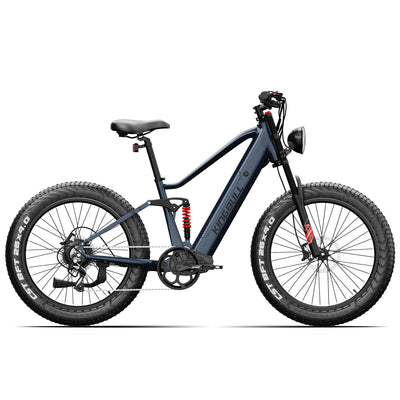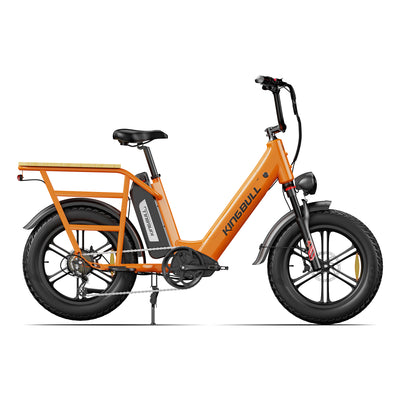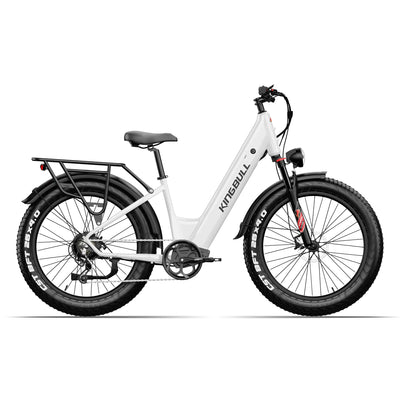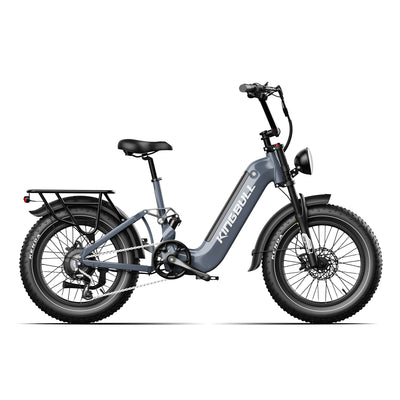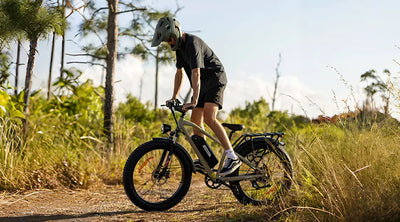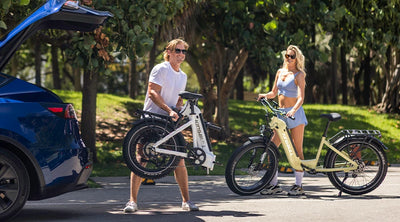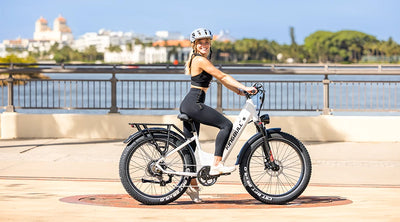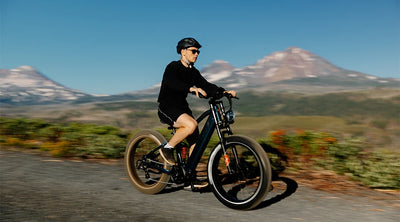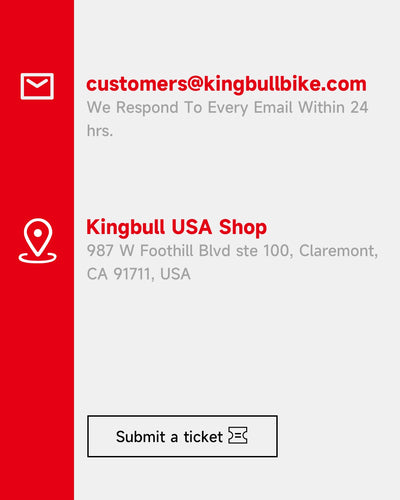Explore News
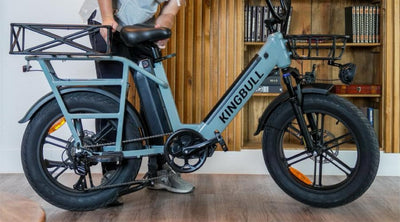
Maintenance
How to Install a Backup Battery (External Battery Pack)
Installing a backup battery is a straightforward process that ensures you have an extra power source when needed. Whether you're upgrading your system or replacing an old battery, following the correct steps will help you complete the installation efficiently. In this guide, we'll walk you through the process step by step to ensure a secure and proper setup.
Step 1: Connect the Battery Wire
Open the wire board and carefully disconnect the red wire from the silver current device. Then, connect the red wire to the black dual-head current device, ensuring a secure connection.
Step 2: Attach the Backplate and Connect the Wiring
Remove the seat and position the backup battery’s backplate onto the frame. Secure it using the three matching screws. Next, route the current wire from the backup battery through the hole at the bottom of the frame and connect it to the black double-ended current unit.
Step 3: Insert the Battery and Test
Align the backup battery with the pin and insert it securely. Press the battery button to check its functionality—a lit battery indicates normal operation, with green showing the current battery level. Once confirmed, reattach the seat to complete the installation.
Conclusion
By following these simple steps, you can successfully install a backup battery and ensure your system remains powered when needed. Always double-check your connections and test the battery before finalizing the installation. If you encounter any issues, refer to the user manual or consult a professional. Now you're all set—enjoy your backup power with confidence!
Read more
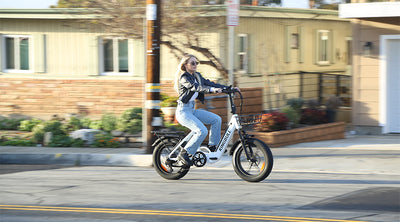
MaintenanceTips & Cycling Knowledge
Battery Longevity of KINGBULL Electric Bikes
Introduction
Kingbull electric bikes come with premium lithium-ion batteries renowned for their quality and durability. In this article, we delve into the expected lifespan of these batteries and share essential charging practices to help you maximize their performance and longevity.
Battery Specifications and Charging Time
The Kingbull battery uses a charger that meets US standards, with a voltage of 48V and a current of 3A. On average, it takes approximately 5 to 8 hours to fully charge. So, how long can this battery last?
Grasping Charge Cycles
Kingbull electric bikes come with high-quality lithium-ion batteries rated for 1000 full charge cycles before needing replacement. A full charge cycle is defined as charging the battery from a fully discharged state to a fully charged state. If the battery is half-discharged before charging, it counts as half a charge cycle. Therefore, discharging the battery to 50% and then charging it to 100% twice equals one full charge cycle. Charging before the battery is fully discharged can effectively double its lifespan!
Battery Lifespan and Warranty
If you use our electric bike daily, completing one full charge cycle each day, the battery life can reach at least 1000 days or approximately 2.8 years. Considering battery degradation, our batteries are designed to last between 2.5 to 7 years. Additionally, our batteries come with a two-year warranty. The actual lifespan of the battery depends on several factors, including how frequently the owner discharges and charges the battery. Heavy users who deplete and recharge the battery daily can expect a lifespan of about 2.8 years, while occasional users may see the battery last 3 to 6 years. On average, we typically see a battery lifespan of around 5 years.
Factors Influencing Battery Lifespan
Frequency of Discharge and Charge
The frequency of discharging and charging the battery affects its actual lifespan. For example, users who fully discharge and charge their batteries every day for a week will have an estimated lifespan of about 2.8 years. Users who charge less frequently can expect the battery to last 3 to 6 years. On average, we observe a typical battery lifespan of about 5 years.
Proper Charging Habits
Maintaining proper charging habits is crucial to maximizing battery life. While lithium-ion batteries don't wear out from use, improper charging can impact their performance. We recommend charging the battery when it reaches about 50%-70% discharge and avoiding overcharging. Using the original charger that comes with the Kingbull ebike is essential, as the standard charger and battery are optimized to extend battery life. We strongly discourage using non-original chargers, as they can shorten the battery life and pose potential safety hazards. Proper charging habits and regular maintenance can significantly increase battery life. Frequent overcharging or deep discharging can severely damage the battery and shorten its lifespan. Charging when the battery is 50%-70% discharged is advisable, and charging for about an hour after the charger light turns green is recommended.
Adopt Good Riding Habits
Try to avoid sudden stops. Electric bikes experience the highest power load during start and stop cycles. Frequent, unstable currents can reduce battery life.
Avoid Exposing the Battery
Extreme weather conditions can impact the battery's actual lifespan. Exposed batteries are more susceptible to lifespan reduction due to weather changes and are more likely to suffer damage from impacts while riding. KINGBULL eBikes feature built-in batteries with aluminum alloy casings and frame tubes, providing double protection. The battery is protected within the frame, avoiding collisions. The leading safety design ensures the battery is waterproof, fireproof, and explosion-proof, enhancing safety.
Use the Original Charger
The standard charger and battery can significantly extend battery life. We do not recommend using non-original chargers, as they may shorten battery life and even cause dangerous situations. Protect the charger and use it in good condition for charging.
Conclusion
Kingbull electric bikes are equipped with top-quality lithium-ion batteries, renowned for their exceptional lifespan and durability. To ensure you get the most out of your battery, it’s crucial to follow optimal charging practices and regularly maintain your bike. Proper charging and usage can enhance battery performance and extend its lifespan, allowing your Kingbull electric bike to stay by your side for longer.
Read more
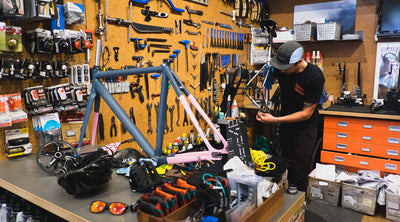
MaintenanceTips & Cycling Knowledge
Handling Error Codes
1. Error Code E034: Throttle Fault
If your electric bike screen says E034, it means there's somethirng funky with the throttle.
why does it occur
Usually, it's either the throttle sensor acting up or it's not hookeed up rightLots of things can cause this, like hiccups during manufacturingor damagefrom a rough ride.
Troubleshooting
Here's what you can try
1. Throttle Sensor Wire Connection Error
Check the throttle sensor wire. Unplug it, then plug it back inIf the E034message disappears, it was probably just a bad connection. Easy fix, just makesure everything's snug.
2. Throttle Damage
If the E034 message sticks around even after you've checkedthe wire, it'slikely the throttle itself is busted. No worries, though! Just reach out to ourcustomer service team, and we'll send you a new throttle.
Please do the test according to the video
2. Error Code E037: Brake Abnormality
If you see error code E037 on the display screen, it indicates a brake abnormality.
Why does it occur
A common cause of this problem is a bad brake sensor cable connection, partly due to a faulty display.
Which cables are the brake sensor ones
The yellow labeled ones as shown in the picture below are the brake sensor cables, one on the left and one on the right.
Troubleshooting
1.Bad brake sensor cable connection
1.1Which sensor works unwell
Reconnect the left and right sense cable separately until the E37 code disappears(For example, if E37 disappears after disconnecting the left side the trouble point is on the left side.)
1.2.How to fix it
Remove the lever firstly and unscrew the ① fixing screw, then tighten or loosen the ②nut shown below until the E37 code disappear.
If you unplug the brake cables on both sides at the same time and the screen does not display E037, there is a problem with the brakes on both sides and need to be replaced.
2.Display fault
If both sides are unplugged at the same time and the display still displays E037, it means there is a problem with the display, You need to reset the display. You can reset the display by following these steps:
Long-press the "+" and "-" buttons to enter the display settings. Then, short-press the power button until you reach the P16 setting.
Long-press the "-" button for 5 seconds to restore the factory settings.
Once you've made the adjustments, long-press the "+" and "-" buttons again to save the changes.
If the display still displays E037 after resetting, then need to replace the display.
Please do the test according to the video
PS: If the problem persists, please contact the customer service team.
Read more
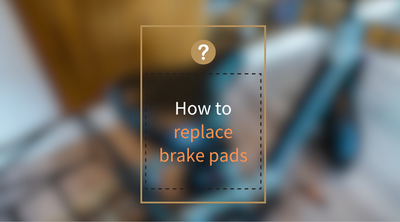
MaintenanceTips & Cycling Knowledge
How to Replace Brake Pads
Brake pads on all electric bicycles are consumable parts that gradually wear down with long-term use. When worn to a certain extent, they can affect braking performance and even pose a safety hazard.Inspecting and replacing brake pads is crucial for every rider, as it directly impacts riding safety. This article will provide detailed guidance on the specific procedures for brake pad inspection and replacement.
Preparation for Inspection and Replacement
Brake pad replacement
Allen wrench
Needle-nose pliers
Disc brake pads wear down over time due to normal use. This can cause a slower brake response time and require more effort to press the brakes.
A squeaking noise from disc brakes is usually caused by contaminated brake pads. Even the slightest amount of oil, including from your skin, can damage disc brake pads. Minimize contact between the brake surface and bare skin whenever handling brake pads. If you do touch the pads, clean them with rubbing alcohol or a specialized product for disc brake pads. Then lightly sand the pads.
Brake Pad Inspection
Check your brake pads for shininess or visible wear. Inspect the pads by removing the wheel and examining the space where the rotor spins.
When inspecting brake pads, pay attention to the following key points:
Integrity: Ensure there are no chunks, dents, or missing parts. If there are, replace the damaged pads before your next ride.
Thickness: The pad material should be at least 1.5 mm thick. If you don't have a ruler, note that a grain of rice is about 1.5 mm thick (width, not length). If the pad is thinner than this, it’s time to replace it.
Cleanliness: The pads should be free of oil and other contaminants. If the pads are dirty, especially if they are oily (a significant safety hazard!), they need to be replaced.
Replace brake pads
Please refer to the Youtube video to install!
Read more

MaintenanceTips & Cycling Knowledge
Ultimate Guide to Silencing Your Electric Bike's Noises
Many times, we find ourselves puzzled by squeaks or unexpected noises coming from our newly assembled or regularly used electric bicycles. These noises often stem from improper assembly or wear and tear of components over time, indicating potential issues. Addressing these problems early can prevent them from worsening in the future. If your electric bike starts making noises, it’s crucial to stop and check it before continuing your ride.
Why is my electric bike making strange noises?
Identifying the source of the squeaking is crucial. Here’s how you can diagnose and fix it, as there are many parts on a bike that can produce noise. Once you pinpoint the source, refer to the relevant component below.
Brakes
The contact between the wheel and the brake pads often causes squeaks. First, check if your wheels are properly secured in the dropouts, where the wheel axles attach to the bike frame. Misalignment can cause the wheel to rub against the brake pads. Remove the wheel, tighten the quick-release skewer, and securely fix it in the dropouts.
Chain
A squeaky chain is likely dry and in need of thorough cleaning and lubrication.
Crankset
If the crankset is the source of the noise, loose bolts might be the culprit. Grab the crank arms (the parts connecting the pedals to the bike) and twist them to see if they move side to side. If they do, tighten them using the appropriately sized hex wrench.
Derailleur
Dry pulleys can often cause the derailleur to squeak. Clean them thoroughly with a dry cloth, then apply a drop of lubricant to each pulley’s axle. Also, lubricate the derailleur’s pivots by turning the pedals.
Pedals
A common question is why the bike makes noise when pedaling. The pedals themselves might be the issue. Check if they are tightened securely or if the pedal threads are damaged. If the threads are damaged and you can’t tighten the pedals, replace them promptly.
Saddle
The rails connecting the saddle to the seat post can also be a source of squeaks. Tighten the bolts securing the saddle using an appropriately sized hex wrench. If the saddle tilts and squeaks, consider taking it to a nearby bike shop.
How to Fix Squeaky Bike Brakes?
Fixing noisy brakes on an electric bike is straightforward. Follow these steps to silence your brakes
Check the Brakes
It’s easy to determine if the front or rear brakes are at fault. During a ride, test the brakes individually. If the front brake is noisy, the sound will come from the left side. If the rear brake is noisy, the sound will come from the right side. If both brakes make noise, adjust both front and rear brakes.
Clean the Rotors
If possible, use rubbing alcohol to clean the disc brake rotors and wipe them with a clean cloth or towel. Clean the brake pads with a degreaser if they are still thick; if they are thin, replace them. After cleaning the brake pads, wait for them to dry completely before reassembling.
Replace Brake Pads
Replacing the brake pads follows the same steps for both the front and rear wheels. If your bike’s brakes are squealing when applied, the brake pads are likely worn out. Worn brake pads can’t grip properly and cause squealing, reducing braking efficiency.
Summary
These solutions will help you fix the squeaking noises on your electric bike, ensuring a smoother and more enjoyable ride. Regular maintenance and timely addressing of any noises can extend the life of your bike and make your rides more pleasant. With summer around the corner, hop on your perfect KINGBULL electric bike and explore the secrets of the summer forest!
Read more




